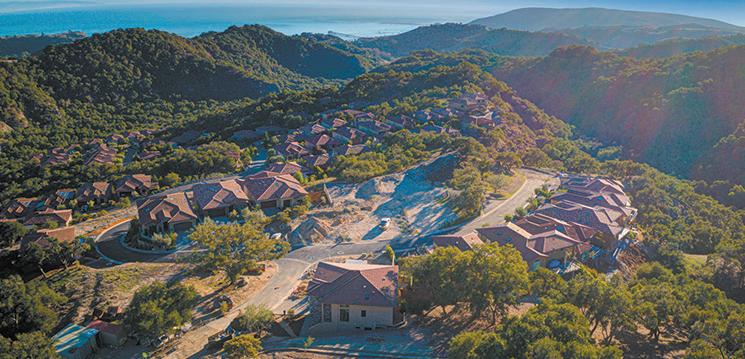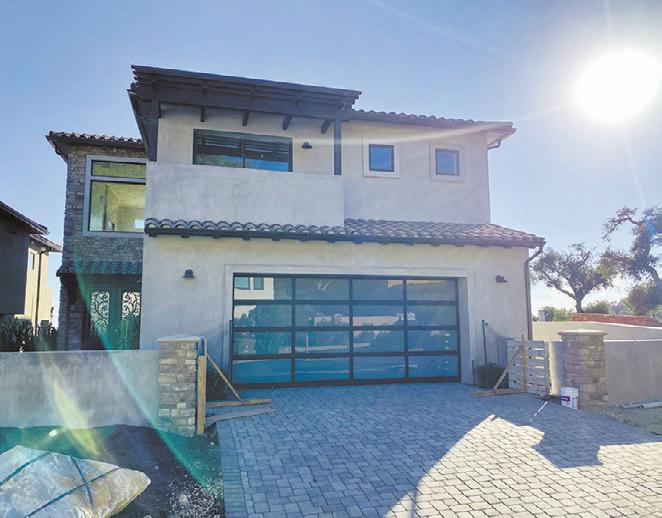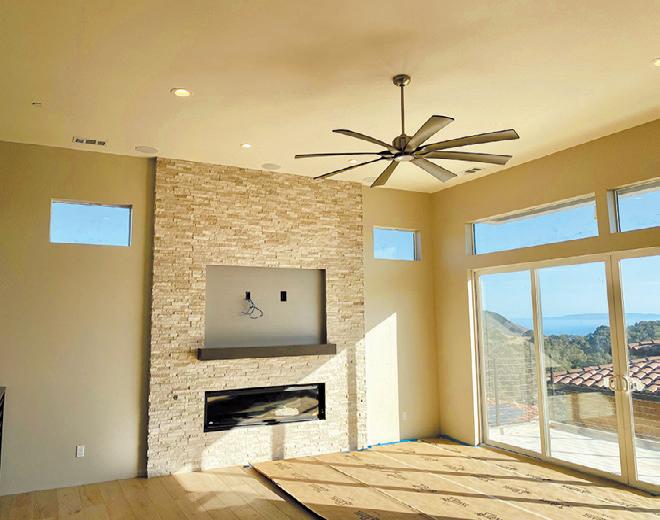








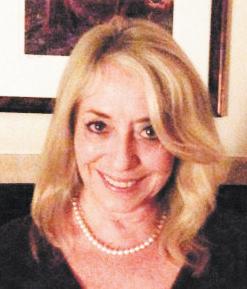




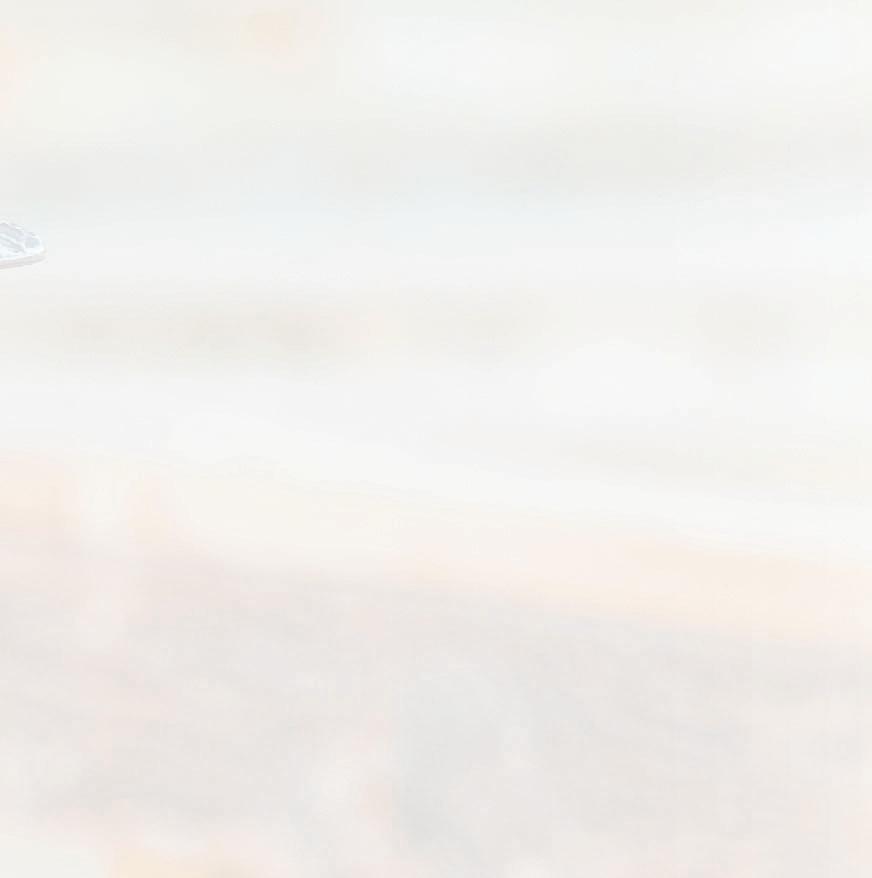
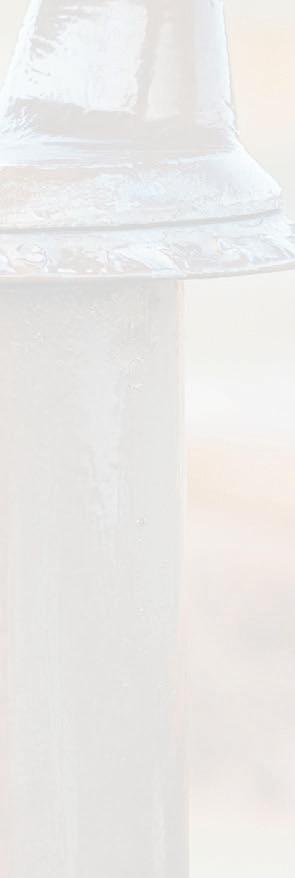


TheNovember chill is in the air as we head into our second to last month of 2022. Looking back over the last year we have so much to be grateful for. A lot of hard work, dedication and grit has been put into the last three years. So much of it was learning how to be flexible, creative and resourceful so that we could get where we are today.
The communities around us shape who we are — which is why it is so important that we get involved where we can. The elections are a perfect place to start: on November 8 be sure to cast your vote or mail in your ballot. Every vote makes a difference.

This month we celebrate Armistice Day, taking time to stop and remember all those who served in “the war to end all wars” and every war since. Armistice Day was set aside as a day to remember the cost of war, the treasures of freedom, and the purpose of peace. This year, once again you can attend one of the several Veterans Day events in remembrance of the cost of war and the peaceful purpose.
As we take the time to gather with loved ones this Thanksgiving we can remember what it truly means to be thankful for all that we have, for the place we get to call home and the people we hold dear.
We are grateful for all of our advertisers and to each one of you who read our publications, and support the wonderful people we have in our community. You make a difference, we are able to employee an incredible group of professionals and do what we all love to do each day which is strive to always Make Communities Better Through Print.

We wish you all a very warm and plentiful Thanksgiving and November.


We hope enjoy this months issue of Avila Beach Life.





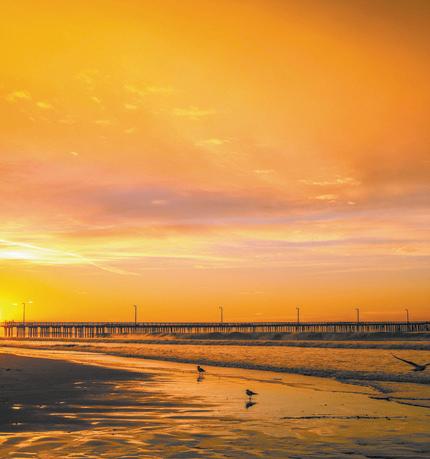

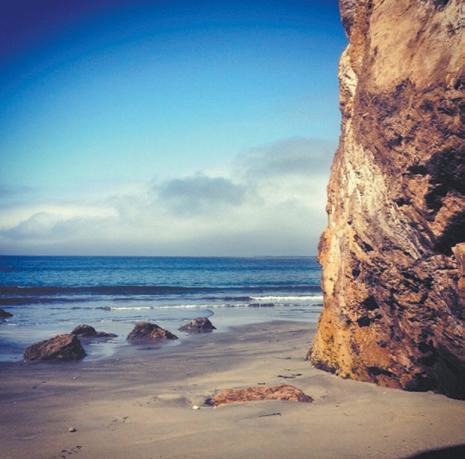

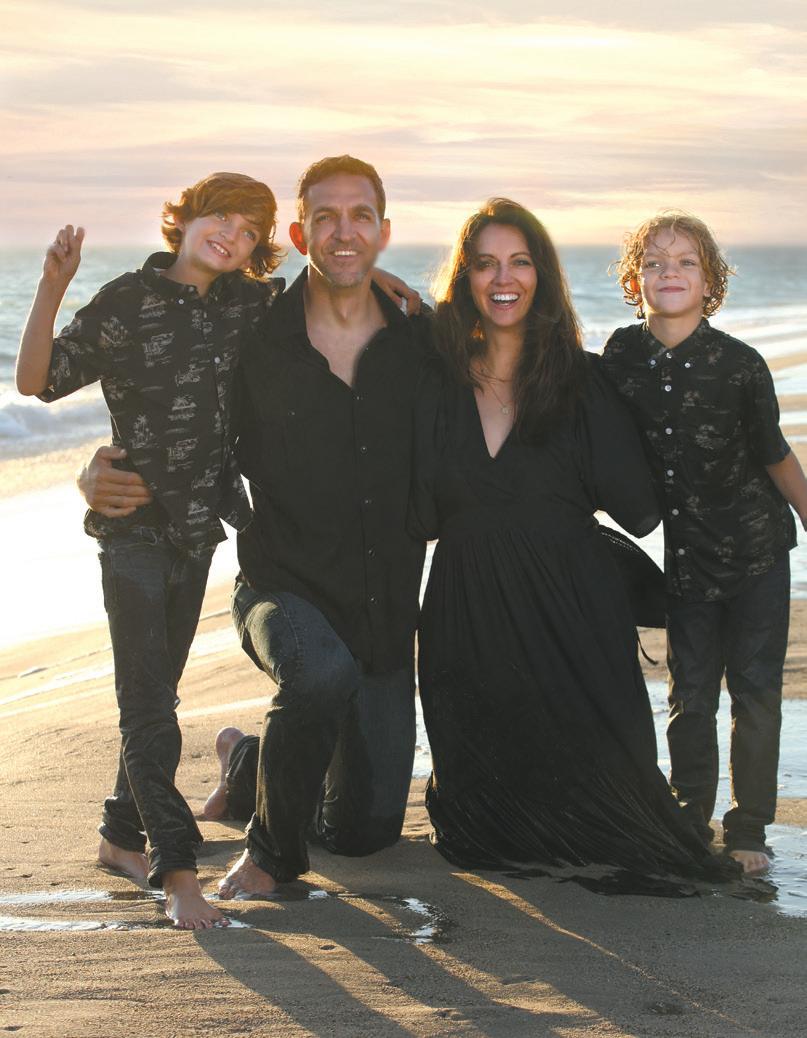
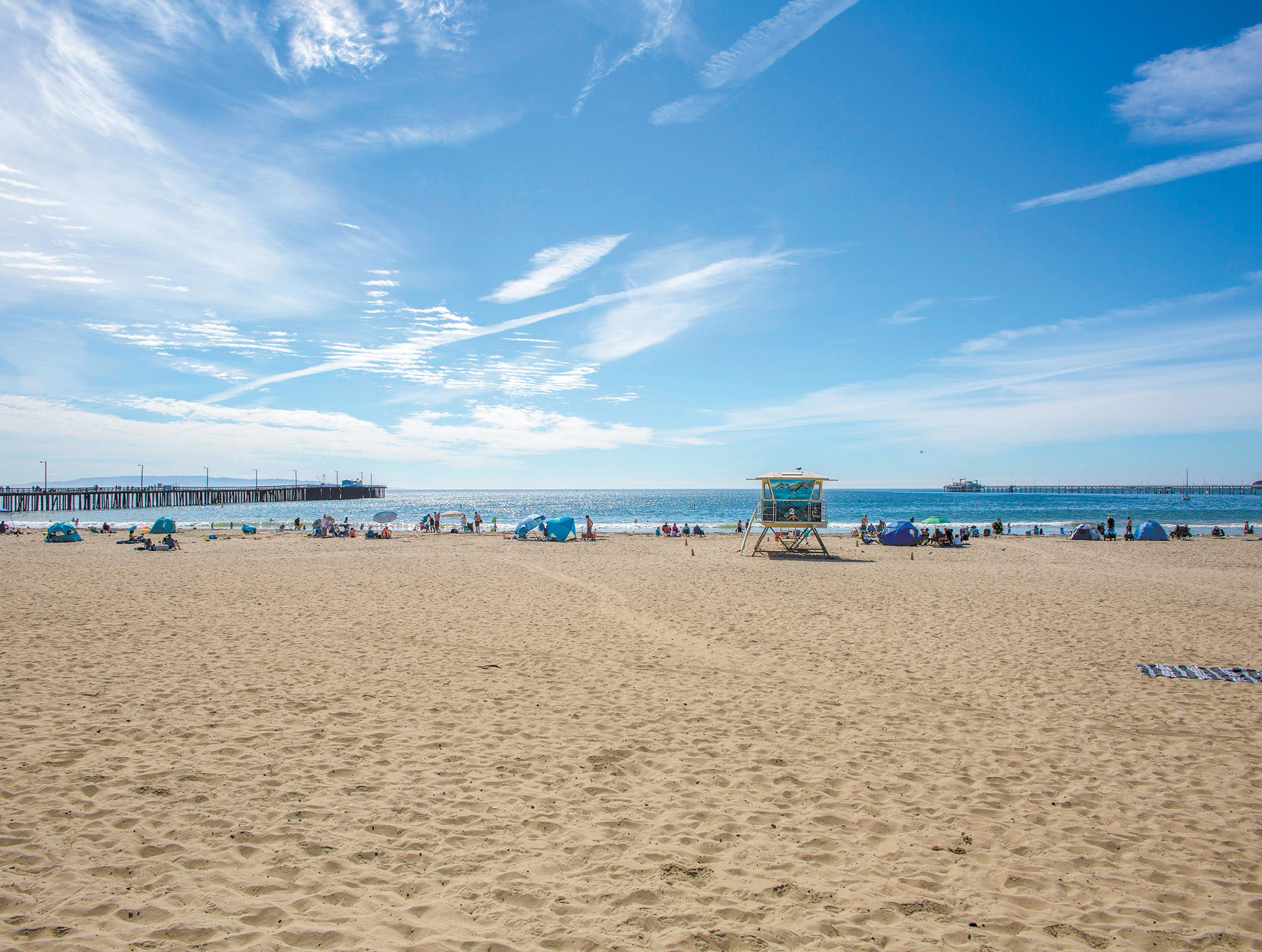
“As we express our gratitude, we must never forget that the highest appreciation is not to utter words, but to live by them.”
— John F. KennedyRick Cohen avila beach foundation
of turkeys (no, I’m not referring to polit ical parties), wild ones sure seem to be in abundance these days, taking up residence at the Avila Beach Golf Resort and the rolling hills neighborhoods in the San Luis Bay Estates. While the turkeys can be a nuisance, they are just one of the many wildlife species that regularly inhabit or visit our Avila Beach communities.
As I have mentioned in recent newslet ter columns, the “Foundation” has returned to its traditional grant-making procedures after two years of special pandemic-related assistance to local agencies. In an effort to re-acquaint ourselves with our community partners, we hosted a “Meet the Grantees Social” at our board meeting on Oct. 13 at the Avila Beach Community Center.
This was a wonderful opportunity to gather our community partners, let every one learn more about their collective work, and meet some of the new agency leaders that weren’t around before the pandemic.
the Oct. 13 social gathering.
Speaking
In case you are curious, the “Foundation” has awarded grants in excess of $3 million since 2001. And since 2009, nearly $600,000 has been awarded collec tively to the agencies in atten dance at
I imagine a good number of you who spend time at the beach during the summer have noticed the activities of the Avila Beach Junior Lifeguards Program. We recently heard from director Russ Edwards that this year was another one of high energy and great success. According to Russ, over 300 kids were able to partic ipate during this summer’s two sessions, the most ever for the program. In addition to the educational components of the JG, program is a series of skills competitions against other JG programs. This summer, the Avila Beach team came in second place at the Carpinteria JG Competition behind their arch-rival Santa Barbara JG program. The next week at the Santa Barbara compe tition, the Avila team finished in first place, beating Santa Barbara on their home turf. Says Russ, “with thousands of points out there and thousands of kids competing, first place was decided in the final event of the day, and Avila Beach came out on top, and we once again sent a large number of JGs to the State Regional Championships and represented very well there with several of our JGs as state champions!” The Avila Beach Community Foundation is a proud sponsor of our local team, and we congrat ulate Russ, his staff, and the entire team for their great success this year!
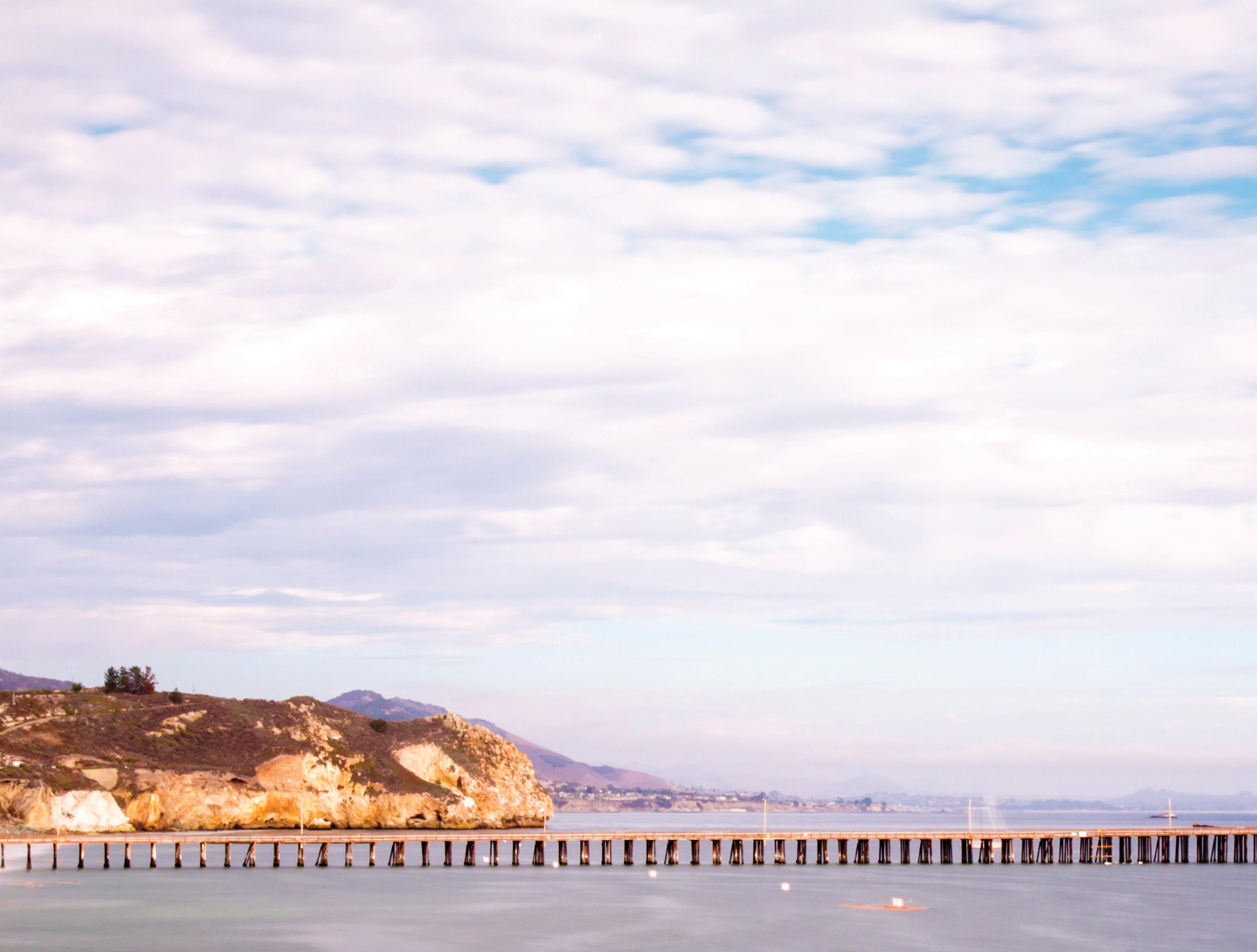
I don’t know if you’ve noticed, but there is an increasing amount of graffiti appear ing in our beach town. Some under the bridge crossing the creek that flows to the ocean, and some on our marquee public art lifeguard tower murals. It is defacing and disturbing, to say the least. I realize no community is immune to vandalism of this sort, but for the most part, Avila Beach has been relatively untouched. There is a cost associated with the ongo ing removal of graffiti, and the “Founda tion” has established a special fund for this purpose. So, with Christmas and Hannu kah fast approaching, I once again invite you to contribute to this fund by securing a special gift for one or more of your Avila Beach family members or friends. Yes, this is an unabashed “commercial moment,” but worth your consideration. You can acquire this limited-edition License Plate Holder when you make a contribution in any amount to the “Avila Beach Public Art Development & Preservation Fund.”
Send your check to Avila Beach Commu nity Foundation P.O. Box 297, Avila Beach, CA 93424

Be sure to include your contact information so we can arrange delivery of your frame(s). That’s it for now, fellow Avilones. I wish you an enjoyable Thanksgiving celebration. See you at the beach!
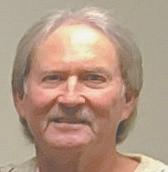
A few weeks ago, something “broke” in the UK pension system and the UK currency, the “pound,” dropped about 6% relative to the dollar in 3 days, a huge move, and required intervention by the Bank of England, preventing, for now, a possible financial meltdown.* The Japanese currency, the “yen,” has lost about 31% against the dollar in the past 7 months, despite attempts to stabilize it. ^ These are massive moves caused, most likely, by the large interest rate increases here in the US. As our rates have increased, the rest of the world suffers because our dollar gets stronger, meaning payments in dollars by foreign countries are harder to make.
While this may seem confusing, I promise, those in power are looking at the underbelly of the financial system closely, wondering if the Fed is going to raise rates too much, potentially causing a mass contagion of defaulted debt.
Of course, the flip side of this is one can now get much higher fixed rates of interest, now approaching 5%, which many thought would never happen again. Maybe it’s time to figure out another way to derisk your portfolio and possibly increase your income so you can enjoy your life now. To learn more, please visit our website and/or call for a time to review your situation (no obligation or fee).
*https://www.zerohedge.com/news/2022-10-06/were-uk-pension-funds-just-canary-gold-mine ^https://www.cnbc.com/quotes/JPY=
**https://www.bloomberg.com/news/articles/2022-10-17/forecast-for-us-recession-within-year-hits-100-in-blow-to-biden?
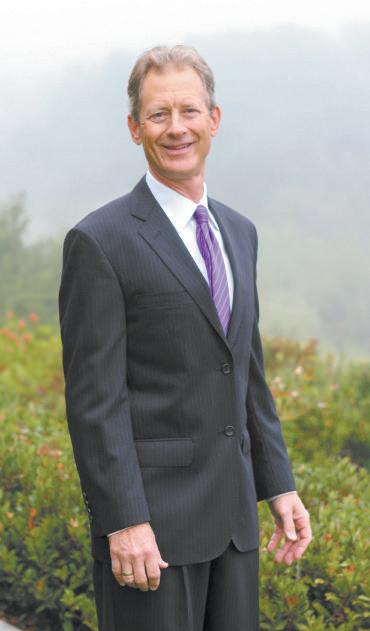
Hi All – each year, I write about all the many wonderful things for which I am thankful. This year, we have been very fortunate for the
generous donations we received, including:

• Avila Beach Community Foundation
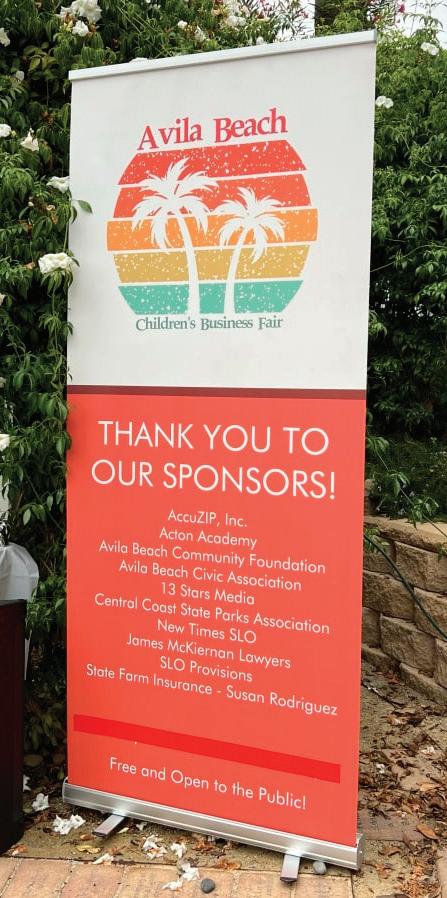
• Supervisor Dawn Ortiz-Legg

• San Luis Obispo County ARPA COVID-19 Small Business Grant
• CARES Act Employee Retention Credit
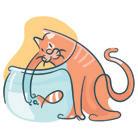
• Chevron Corporation
• Pacific Gas & Electric Co.
• Blackbaud Giving Fund
Yes, this is a list of our generous major do nors…but there is so many additional reasons to be thankful for in life. We live in one of the best places in the country. The sunshine, friendly community members, and people who love dogs…okay, I tried to sneak that last one in to see who is paying attention. Neighbors care about and help each other. The day we were moving into our Indian Hill home a number of years ago, one of my terrific neighbors brought over dinner just to welcome us.
My HOA hosts a “welcome party” each year for all new people moving into our community. The Community Center hosts three Alcoholics Anonymous meetings each week, Cuesta Emeritus yoga and healthy cooking classes, polling place, etc. There are so many great non-profits in our community that continue to give back to us, even when they are short on staff and volunteers… not to mention funding. With all of you being so kind and caring, we will continue to be the best place in the country!
The second annual Avila Beach Children’s Business Fair was a tremendous success! Children from all around the Central Coast came together to display and sell their wonderful and innovative products to a crowd of shoppers. There were over 65 chil dren and 37 booths selling every thing from sea glass art and jewelry, homemade dog treats, slime, organic cotton candy, surprise soaps to a 12-year-old young author sell ing her first published book.
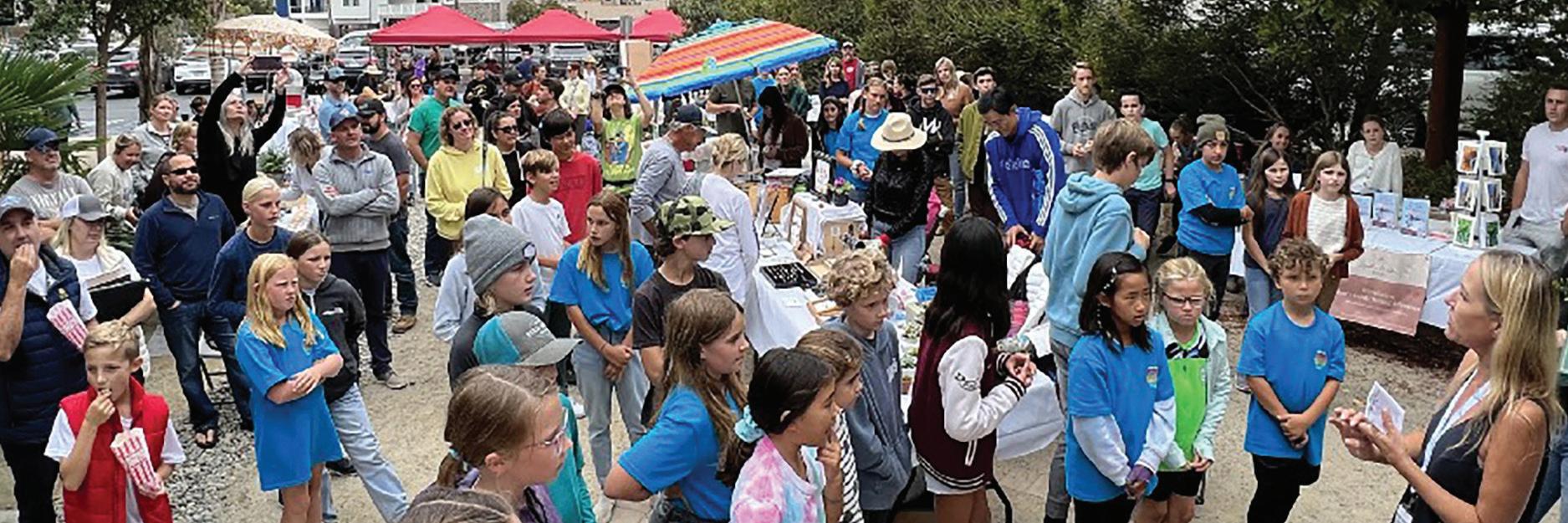
The fair was held on October 15 at the Avila Beach Commu nity Center’s Healing Garden in donated space provided by the Avila Beach Civic Associa tion, one of the event’s sponsors. Award trophies and cash prizes were handed out to 15 child busi ness owners in the age categories 6-7, 8-10, 11-13, and 14-17 in the following categories:
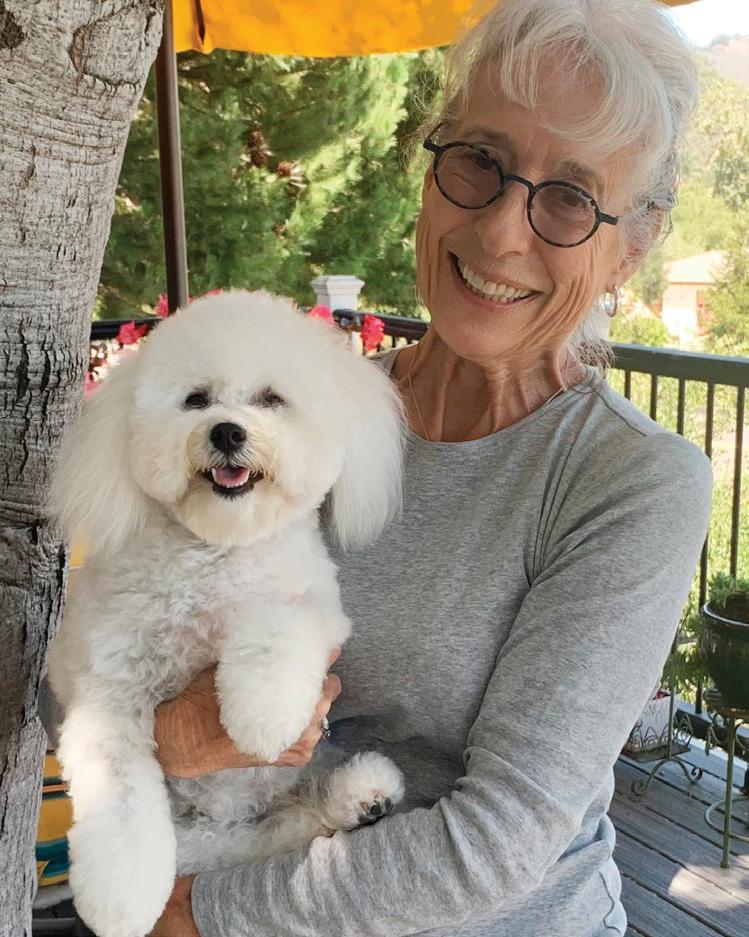
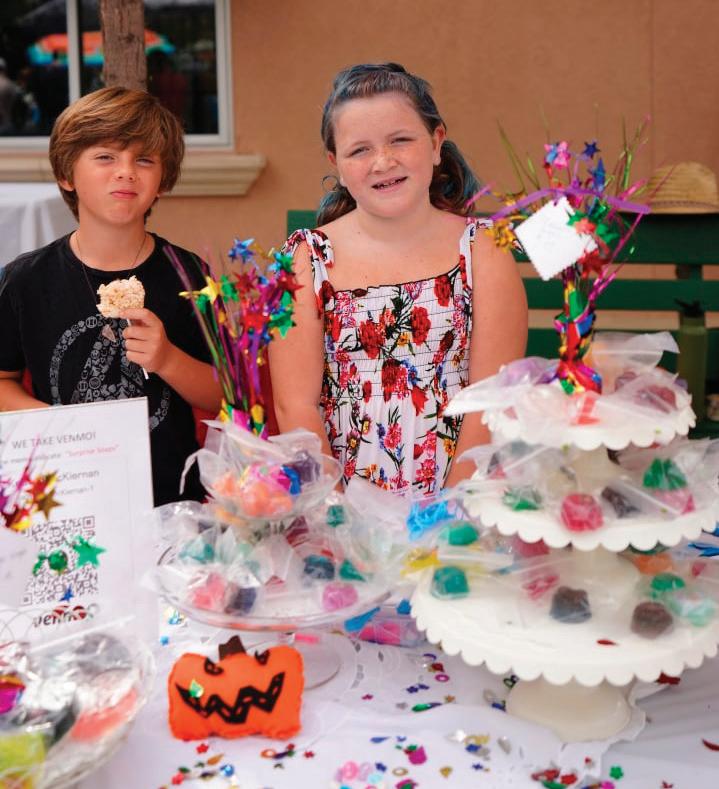
• Most Original Business Idea
• Highest Business Potential
• Best Presentation
A huge thank you to judges Mary Matakovich, Board member of the Avila Beach Civic Asso ciation; Rick Cohen, Execu tive Director of the Avila Beach Community Foundation; and Jessa Lebed, sixth-grade student at Bellevue Santa Fe Charter School. The judges donated their time and made the judging process interactive and fun for everyone. They stopped at each booth and asked the sellers questions about their products, brand strategy, and business potential. All participat ing children received a Certificate
of Recognition hand signed by all five San Luis Obispo County Supervisors. Thank you to Dawn Ortiz-Legg, District 3 Supervi sor, and Sarah Sartain, District 3 Legal Assistant, for helping with the certificate process.
Congratulations to retired educa tors Annette and Richard Pascual for winning the raffle basket donated by the Central Coast State Parks Association…they loved it!
The feedback from parents, chil dren, and community members was overwhelmingly positive. One event attendee sent a follow up emailing stating: “We would like to thank you, your family, and your commit tee for organizing such a wonderful event. We were very impressed with the children and their products. We love the idea and all of the partici pants did an excellent job promot ing their brands.”
Event organizer and host Kris ten McKiernan stated: “This event truly makes my soul happy. It takes a lot of work and planning but it is for all the right reasons. This event brings kids, families, and commu nity together…which we can use a lot more of, especially these days. I am so proud of all of the children that put so much effort and hard work into creating and showcas ing their products. They were so proud to show their products and to sell them. They made some good money too! They are the real heroes. I am already getting requests when the next event will be, so stay tuned for announcements about the 3rd annual Avila Beach Children’s Business Fair in October of 2023 coming soon. I truly could not do this without the support of my family, friends, community, and event sponsors. I am extremely thankful; it takes a village…and we have a good one!”
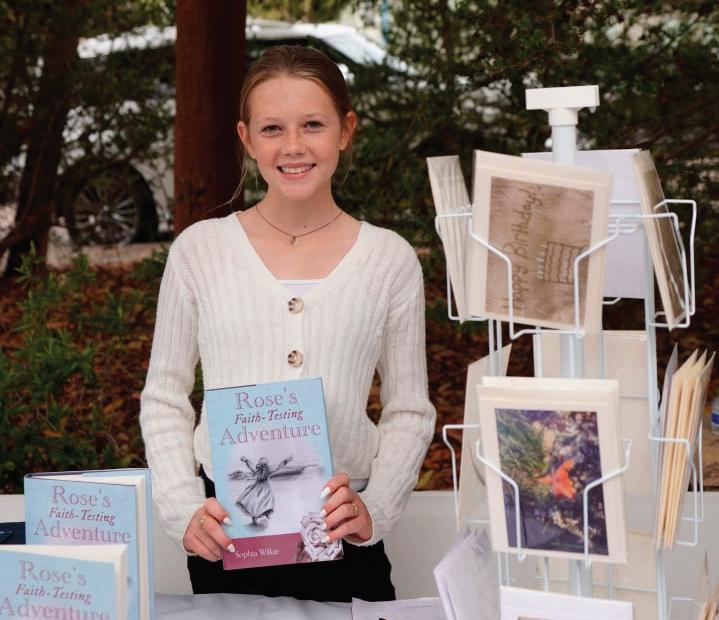 By MARY FOPPIANO
By MARY FOPPIANO
Susie said
really
Evidentlyno reporters were around — and if photos were taken they have yet to be found — when our decommis sioned fourth-order Fresnel lens was taken down from the Point San Luis lighthouse tower on March 30, 1976. It was removed from the 40-foot tower’s octagonal lantern where it had been housed since 1890 when the light station first began operating. Stew Jenkins, who was on the Port San Luis Harbor Commission at the time, tells this story of why the lens was removed:
“It was a .22 caliber shot at the lighthouse tower that got the attention of the Port San Luis Harbor District. That, coupled with the plans of the Reagan administration to surplus and sell the 30-acre light station to a private bed and breakfast, triggered efforts by the five Harbor Commissioners to start negotiating with the federal government to have the light station transferred to the Harbor District to keep it in public hands as an eventual public park and historic site. I worked with my friend Leon Panetta and Dennis Johansen worked with his friend, then State Assemblyman William Marshall ‘Bill’ Thomas.”
Retired Chief Warrant Officer Bruce J. Spano was there when it happened, involved in both the careful planning for, and the actual removal of, the lens that day. Spano was tasked by his Coast Guard superiors
to assist with the move, and to coordinate with Harbormaster Douglas Kendall “Ken” Jenkins along with fellow Coast Guardsmen Jerry Arnett, Joseph Baima, and Robert E. Stafford, and with at least two members of the harbor crew.
As Spano recounts it, the removal of the lens was not as difficult as one might imag ine. The lens itself was boxed up in a specially designed crate after it was pushed horizon tally through the small doors in the lantern room out onto the gallery deck. It was then crated with the precious lens upright, then hoisted up over the gallery railing and lowered to a flatbed truck provided by the harbor. Spano recalls:
“The only planning involved was taking measurements of the lens, pedestal, and access.
Then a boom to lower the lens needed to be considered as well as how to crate the lens. Mr.
Jenkins made the port [Port San Luis] shop spaces available, and Mr. Collar and Mr. Lepley provided invaluable experience.
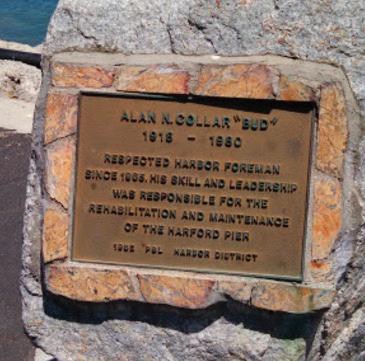
“As I remember, the boom was a three-leg design anchored around the lantern’s gallery/ catwalk space. I believe we used a ‘two-fold purchase’ to lower the lens, with two men pull ing on guidelines to keep it from hitting the tower on the way down.
“Though I was in charge, so to speak, it truly was a team effort and I still look back at the task with fondness and admiration for all involved. It was just a great experience for me.”
Spano recalls that pieces of foam rubber, something like mattress paddings, were used to cushion the lens as it passed through the tower access and was loaded on the truck, which then made its way to the county
history museum in downtown San Luis Obispo, which had enthusiastically agreed to take it. Louisiana Clayton Dart, museum curator at the time, would have been thrilled to have this valuable, historic piece to showcase as the jewel of the museum’s collection.
Later runs were made over the next week to move the rest of the apparatus to the museum — the pedestal, cable-and-weight system, timing mechanism, and so forth.
According to the museum’s records:
"It was a feat to get the light into the museum. The light itself came swathed in masking tape to preserve it. The base of heavy metal demanded the strength of four men to carry it up the 20 steps into the museum building. And a tripod, made of three pieces of pipe 11 feet high, was suspended over the base and a ‘com-a-long’ installed to lift the light up and seat it on its base. A steel cable, ¼-inch in circumference, but Herculean in strength, lifted the swathed light, which looked like a cocoon, and set it on its base. The hoist, which worked with a ratchet, worked slowly and beautifully and fulfilled its mission."
This was a laborious job, patiently and skillfully done by these men on April 7, 1976: Alan N. Collar of Pismo Beach, Henry C. Lepley Jr. of San Luis Obispo, and four Coast Guardsmen: Joseph Baima, Jerry Arnett, Bruce Spano, and Robert E. Stafford.
The lens was displayed at the history museum for 23 years. But in 1999, the history museum flooded. According to the History Center’s Executive Director Thomas Kessler:
“From what I’ve heard it was horrific. Our downstairs is halfway underground, so it just filled up with water. Everything paper was ruined. Lots more was ruined besides. There was a long cleanup process, followed by the realiza tion that as long as we were going to do repair works, we ought to take care of the fact that the whole place was unreinforced masonry, and make updates to come into compliance with the ADA. So the Board at the time did a major capital campaign, earthquake retrofitting took place, an elevator was installed, etc. The turn around time was actually pretty quick, but it still took until 2001 to complete.”
So the lens was moved again, this time to the San Luis Obispo City-County Library, where it remained until 2010. Stew Jenkins recalls:
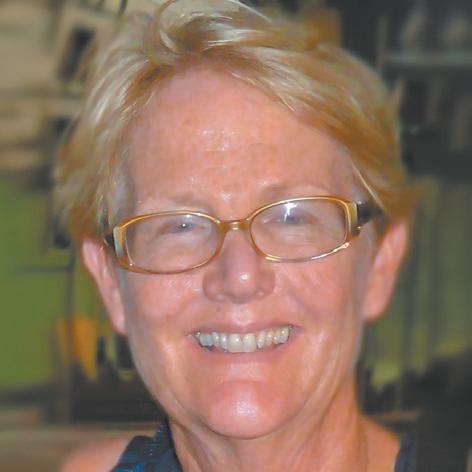
“By the time the library needed it out, so they could remodel, the Lighthouse Keepers had succeeded in restoring the horn house, and were able to move it into what had been the horn house tool room where it could be safely displayed. By this time technology had moved forward so much that these kinds of lenses were less and less in use. As I recall, we could only locate three living certified Lampists potentially available to help us.”
“James ‘Woody’ Woodward came out to inspect, and gave us a good bid, which we accepted. He provided the plans for the box and supervised the installation of the metal mount for the lens and its operating mechanism onto the specially designed and reinforced base built to keep the mounting level and stable and free from shaking during the movement of guests and earthquakes. He also supervised taking the lens out of its container at the library, requiring specific
clothing and removal of all jewelry, rings, keys, and anything else that might scratch the lens during handling. We all had to wear white cotton gloves. Once it was moved, in March 2010, he made some needed repairs and mounted the lens, educating volunteers on the methods of cleaning it.”
“The volunteers loved the lens. In fact, they perhaps loved it too much, cleaning it so often that we had one of the bull’s eyes pop out and fall on the floor when the special grout that holds the glass pieces into the brass fittings got too well cleaned.
“By serendipity, we had just planned our grand opening fundraiser with an open-air trolley to bring the public out to enjoy the light house. Every dollar of that successful fundraiser went into bringing Mr. Woodward back to go through the glass pieces one by one to replace the unique grout that holds them in place, which traditionally needed to be done every three to five years in working light stations. It had been well over 30 years since the lens had been so maintained.”
In recent years, the task of cleaning the lens was mostly left to Barton Dennen, a long-time volunteer who had been care fully trained in the art of polishing the glass prisms and who cared for the lens like one would a precious jewel. But in early 2020, Dennen passed away. While he left behind instructions for the care of the lens (see box), no one felt up to the task.
As the lens is displayed inside a carefully controlled environment, and no longer has a kerosene flame, it’s not as if it had become dirty. But clearly the glass no longer sparkled.
Enter twin sisters Karen Scanlon and Kim Fahlen from San Diego.
For over 15 years, Karen and Kim have been volunteering with San Diego’s Cabrillo National Monument, tending the third-or der Fresnel lens in the Old Point Loma lighthouse lantern along with the fifth-or der Fresnel lens from the Ballast Point light station. They learned how to clean the glass pieces that make up these lenses from the National Park Service, and now clean lenses all over the country and even internationally.


Armed with linen aprons to protect the glass from buttons and belt buckles; white cotton gloves; linen rags; spray bottles with a solution of rubbing alcohol, water, and a drop of detergent; and a small wooden tool somewhat like a tongue depressor, the sisters arrived at the light station on September 27, 2022, ready to work.
Karen and Kim also trained volunteer Steve Avelar on how to clean the lens in the future, and left behind gloves, linens, and their special cleaning solution to aid in the process. After an hour or so of careful work by Karen, Kim, and Steve, the lens now shines (with apologies to Annie) “like the top of the Chrysler building.
kathy mastako Board Of Directors Point San Luis Lighthouse Keeper Alan N. “Bud” Collar memorial at Port San Luis. Collar, harbor foreman at the time, was one of the men who assisted with the lens’s removal on March 30, 1976. Contributed photos Kim Fahlen (left), Steve Avelar, and Kim Scanlon clean the Fresnel lens. By BETTY HARTIG For Avila Beach Life
By BETTY HARTIG For Avila Beach Life
That is the sound of a peregrine falcon zipping by.
The bird’s rapid flight can buzz overhead, causing a passerby to flinch with uncertainty. Quite startling! The raptor is speedy with crafty aerodynamic move ments. It is easy to understand how the F-16 Fighter plane bears the name “Fight ing Falcon.” When a peregrine falcon stoops, its speed increases tremendously. The pere grine’s diving speed can reach more than 186 miles per hour, which makes it not only the fastest bird but the fastest animal on earth.
The falcon is about the size of a crow, predominately dark blue-gray in color, with black above and white below its head. The bird is easily identified by the distinctive thick black sideburns. In flight, an adult’s feathers appear checkered with white and black sides and underwings. As with most raptors, the female falcon is larger than the male. The avian prefers to nest on tall coastal cliffs or buildings. No actual nest is built; eggs are laid in simple scrapes or small depressions made in the soil or gravel of a cliff’s edge. During nesting, peregrines are extremely territorial. They will chase away anything that comes close to their family. The female stays with the chicks, referred to as eyas, at first, while the male dutifully brings food for her and the young. Usually, eyas take their first flight at about six weeks. After their first flight, they are called fledg lings. Unfortunately, the mortality rate for
young falcons is about 60 percent. The aver age lifespan is 12-15 years old.
Peregrine falcons can be spotted regu larly on the sea stack between the north and south bound lanes of Highway 101 in Pismo Beach as well as Morro Rock in Morro Bay. However, they can be seen elsewhere along the Central Coast, including Avila Beach. Their perching preference is a high vantage point that allows them to view, aim, and snatch at targets with ease and accuracy. Pere grine falcons have been known to use ships at
sea as a high post to hunt for seabirds. Like all animals in life, sustenance is required to survive. Medium-sized birds are their meals. Shore birds are a top menu item, along with ducks, pigeons, and occasionally larger game such as geese, all of these are plentiful along the coast, especially in creek estuaries like the one along the Bob Jones Pathway. Peregrines are designed to make swift aerial assaults. Grasping their prey in flight with no prob lem. Keen eyesight, smooth feathers, and pointed wing tips allow the falcon to have
BOB JONES TRAIL By RON PIGEON For Avila Beach Lifesuperior aero efficiency. The falcon can see at least one mile in distance and keep track of three moving objects at the same time. They are magnificent to watch while in flight, ther mals and updrafts are masterfully utilized to gain height and ultimately take their target in mid-air. Teamed with the falcon’s expert hunting skill is a sharp hooked beak used for tearing food. The upper beak has a smartly formed notch for severing the spinal cord of the victim. Powerful talons are used not only to capture other birds but as brakes. The bird positions its yellow talons downward to increase drag and reduce speed to 10-20 miles per hour.
In ancient times falcons were consid ered the birds of royalty. These raptors of high distinction were at risk of becoming extinct in the United States during the 20th Century due to pesticides, specifically DDT, which made its way into the food chain and affected the female peregrine’s ability to lay healthy eggs. The banning of DDT in the 1970s increased the peregrine population.
The bird’s successful recovery enabled their elimination from the endangered species list in 1999. Learning about issues that affect wildlife and people is critical to our environ ment. Impressive birds, such as the peregrine falcon now exist because of changes that were made in the use of chemicals. Moni toring how humans use land, and evaluating what is put into the earth, should always be considered as we strive to protect habi tat. Conserving birds is in our hands. Let us work together to carefully preserve all wildlife.
If you’ve walked along the Avila promenade lately, you’ve seen that — after seven years of the Avila Pier being fully or partially closed — the Port San Luis Harbor District (the Harbor District) has begun work to repair and renovate the Pier.
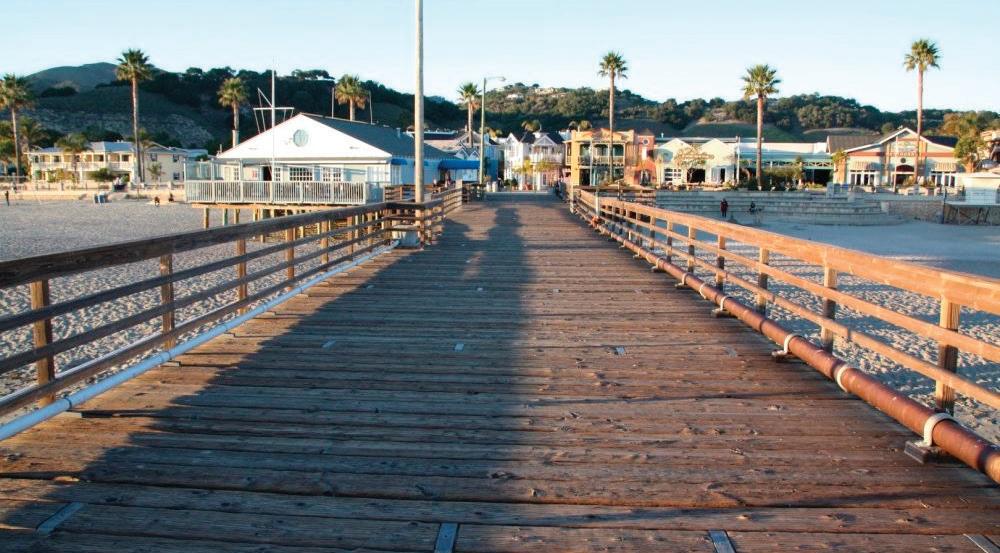
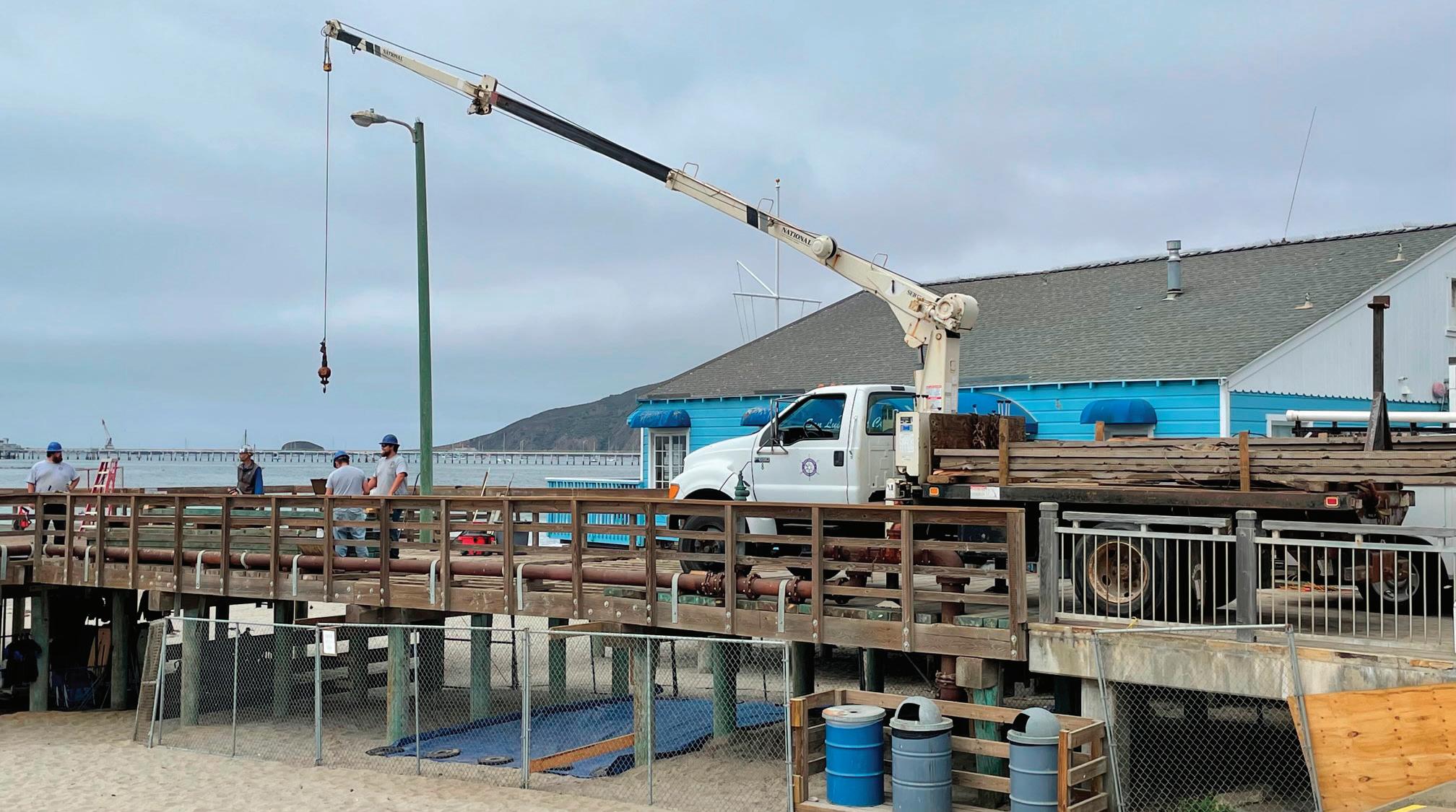
This is due in no small part to the nearly 200 community members who have pitched in over the past three-plus years by making tax-deductible dona tions to the Friends of Avila Pier (FOAP). Because of those accu mulated donations, FOAP was able to pass on $245,000 to the Harbor District this past April, which filled in the remaining funds the District needed to begin Stage 1 of its repair plan for the Pier.
Stage 1 involves repairing or replacing about 50 damaged pilings and replacing all the deck ing and handrails out to, but not including, the pier terminus (the wider portion at the seaward end).
As the decking is replaced, the sizable gaps between the deck ing boards will be eliminated, making the Pier more wheel chair- and pedestrian-friendly. Upon completion of Stage 1, the Harbor District expects to be able to fully open the Pier.
Although the majority of funding for Stage 1 is coming from a $1.25 million Wildlife Conservation Board grant, that grant did not provide for replac ing and upgrading the lamp posts
nor for relocation of the util ity lines (electrical, water, and sewer) from the deck surface to outside of the handrails. These are expenses that FOAP had the capacity to fund this year.
Unfortunately, we expect the Pier to remain closed for the duration of Stage 1 repairs, which will likely last well into 2023.
As we await the reopening of the Pier upon completion of Stage 1, our focus at FOAP now turns to Stages 2 and 3: Stage 2 — Repairs to the Boat Landing and Restrooms at the end of the Pier.
Stage 3 — Other Repairs and Improvements to the Terminus of the Pier.
Although grants to the Harbor District are expected to provide the majority of funding for Stages 2 and 3, we expect that funds from FOAP will still be necessary to augment those grants.
Donations to support the upcoming Stage 2 and 3 repairs may be made by sending a check to Friends of Avila Pier, PO Box 685, Avila Beach, CA 93424 or you may donate by credit card via our recently updated website: AvilaPier.org.
Any individual donor who gives a total of $1,000 or more (including previous donations) will be recognized on the Pier with a plaque in their own name or in honor of someone they choose. Donors of $15,000 or more will be recognized with a larger and more prominently placed plaque.
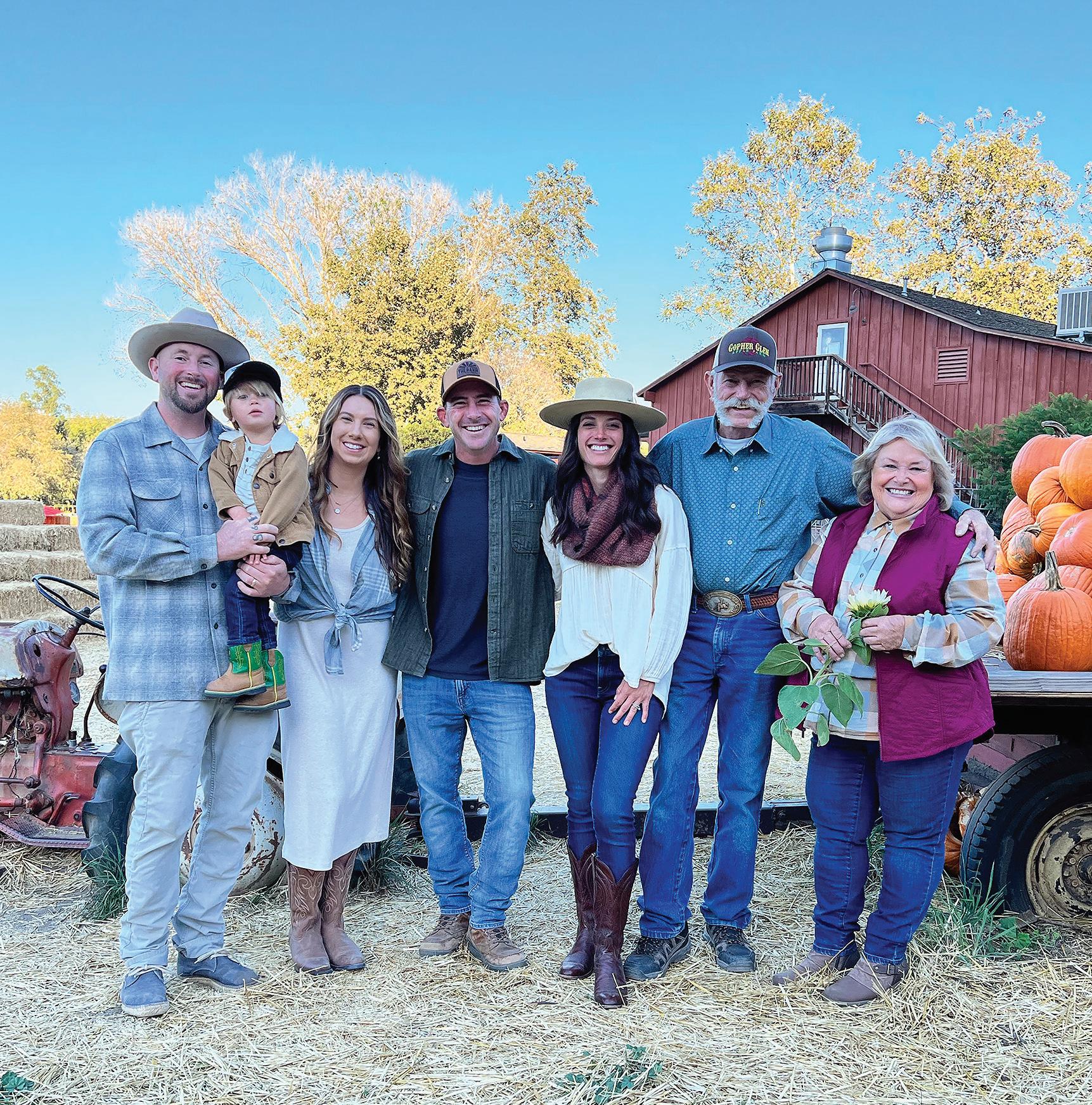 By BLAKE ASHLEY FRINO-GERL For Avila Beach Life
By BLAKE ASHLEY FRINO-GERL For Avila Beach Life

For decades Avila Valley Barn has been somewhat of a landmark for locals, as well as tourists coming to San Luis Obispo County. Visitors know what to expect — a fun time at the farm, with many goods to purchase and take home. The farm has grown over the years, especially from when it began. Going down memory lane with the owners, Debbie and Bruce Smith, provides a farming journey full of love.
Growing up in Lancaster, where Debbie’s grandparents farmed alfalfa and hay, is where “the love of agriculture” started, according to Debbie. It wasn’t until she and Bruce, along with their four boys — Dean, Rick, and twin toddlers Jacob and Jesse — moved from Bishop, Califor nia, to the Central Coast in 1987 that she was able to further her passion. While settling in, Debbie was able to raise their sons while Bruce worked in the welding field.
As she says, “One morning an ad in a SLO paper caught my attention, reading: Wanting person who loves the country and loves agri culture.” Being very interested in those two, she felt that “it couldn’t have been more clear that this was just written for me.”
Local orthodontist Dr. John DeVincenzo and his school board president wife, Roberta, offered Debbie and Bruce the position of help ing them start a U-pick and hay rides at their farm in Avila.

It was very smart of the DeVincenzos to give them the job as not only were the Smiths fitting to farm, but also, as Debbie says, “we had all these boys” to help.
The farm had no name at the time, but it was Debbie’s idea to name it “Avila Valley Barn” as it was “in the middle of a beautiful coastal valley near Avila Beach with a great looking barn.”
At the beginning, Debbie worked a little table in the front of the barn, sending people on hayrides to pick olallieberries, taking care of her “four busy boys,” and all the while “thinking we need to create more,” she says.
After the first season, they grew more vege
tables, and the orchard grew vastly, so much that the leftovers after U-pick were immense, and Debbie decided she wanted to utilize their produce and not let it go to waste. That is when she had her “light bulb moment” to “make pies.”
It took a year — working on recipes, the equipment, a bakery, and permits. As with each season, the fruit became more abundant, which allowed for making jams, jelly, and the produc tion of honey from hives for pollination, which initiated selling packaged goods.
Debbie included “Bonnie and Buster, a Belgium draft horse team” to pull the U-pick wagons. Then while they built a corral for horses, the Smiths decided have cows, goats, pigs, minia ture donkeys, ponies, and chickens. The family was truly turning the Avila Valley Barn into the ideal farm.
The Smith boys assisted with the pony rides and steering the draft horses for U-pick, but they knew more employees were needed as their endeavors were increasing — the farm stand, fields, bakery, kitchen and home goods, a second barn, and sweet shoppe.
“Who eats pie without ice cream?” Debbie asks.
Once the DeVincenzos passed on the business to the Smiths, who also adopted three of their great-niece (Theresa) and nephews (Roger and Russell), having children in their home again allowed a new generation to begin helping on the farm.
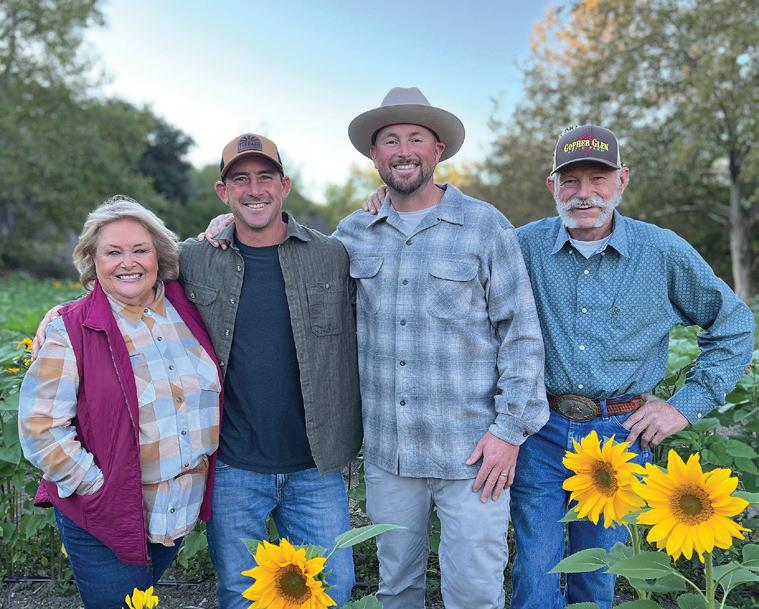
The Smiths bought Gopher Glen, and then during COVID, they decided it was a good time to retire. Thankfully, the family-run business would stay in the family.
Debbie told her kids, “You were raised on the farm and have lived it.”
Taking over as the second-generation owners of the business are farmers and Cal Poly grad uates Jacob and his wife Raven, along with culinary chef Jesse, who runs food operations, including the sweet shoppe and bakery. The other siblings live locally and gather at the farm when the time calls. Recently the only sister, Theresa, returned to SLO and is working in the bakery at the farm.
Just a few changes are being made for improvement.
“We have been updating all of the buildings, landscaping and petting zoo animals/pens for the last year,” Raven says.
They have also started making hard cider with their apples.
“Next, we are working to obtain our event permit to host weddings, music events, and farm dinners,” she adds.
While Avila Valley Barn keeps growing, the owners understand that visitors want to see what they have always enjoyed in the past and come back for.
“Over the years, we have tried to keep much of Avila Valley Barn the same for our customers since it is a generational tradition for many fami lies,” Raven said. “When someone feels nostalgic about a place they want to return and find much of it how they remembered.”
With everything that goes on in the world, “people can set aside all the serious things in life and just enjoy time with their family in a beautiful setting,” Raven continued. “The only politics we talk about around here involve goats, cows, and chickens!”
Debbie and Bruce created what Avila Valley Barn is today and began a journey that not only is profound for their family, but also for the many visiting families coming to enjoy it together.

“We always wanted a place for our wonderful community to enjoy agriculture down on the farm,” said Debbie.
Have your cake and eat it too? Skate on thin ice? Go around twice in life? Really love your enemies? Lose weight while sitting in a chair? Invest in the stock market while protecting your capital? Oh wait, you can do that!
“Buffered” investments allow investors to profit from gains in major stock market indexes while providing up to 20% protection from downside losses. If you are an index investor and are concerned about your money (and who isn’t), please call or email to learn more and to receive a prospectus and important information. You can also go to my website to view a short video that explains the details.



